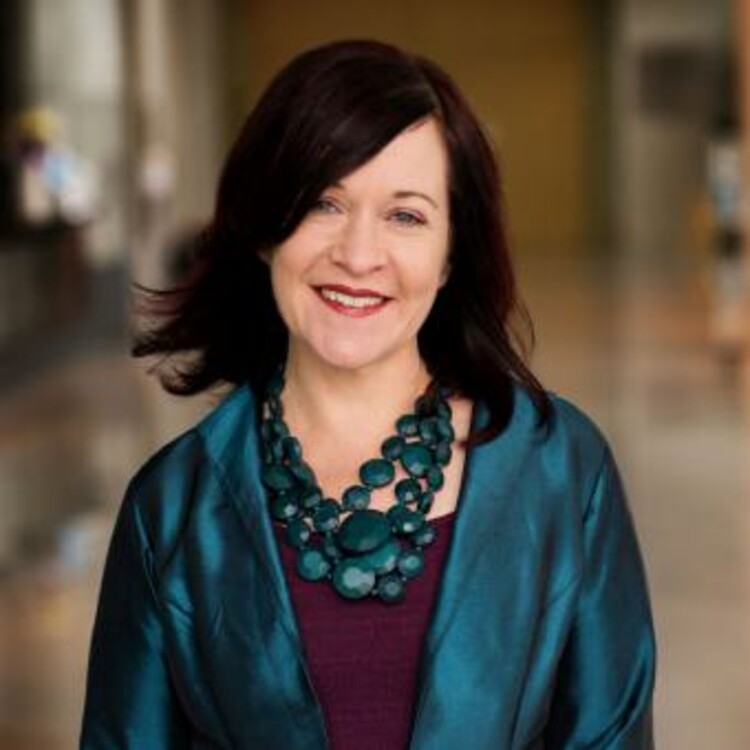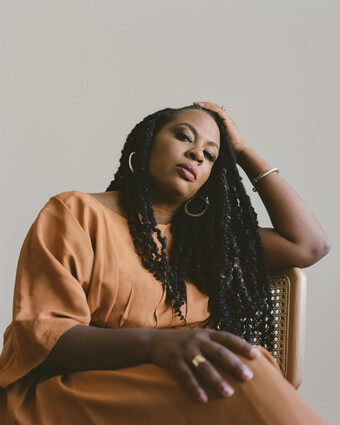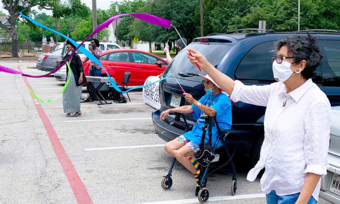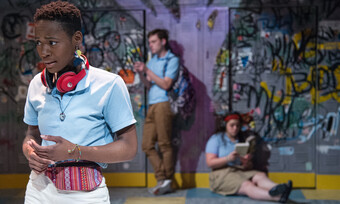With this imaginative vision of what could be, it was easier to accept that we can’t fully know the outcomes, nor can we organize or plan for exactly what lies ahead. So, communities started to embrace the inherent uncertainty and the magnificent possibility that could be realized through a process of collective inquiry and transformation, which would move us away from breakdown and toward a total breakthrough. People began to recognize the precipice on which the world teetered not as an edge but as an entrance. Rather than knowing what might be on the other side, people greeted the delicate process of moving through as the immediate imperative.
In this openness, it became easier to imagine the future not as a destination but as a journey, a constant becoming. And though the destination was not entirely visible, it was certain that a fundamental condition for a positive and deep emergence from where we had been was, and always will be, that we fully understand our past and present wrongs, and that we reconcile and repair. This, as is now well understood, means reimagining the structures and practices we have built and redistributing resources and power. For some, it means a great letting go—a release and redistribution of power and status, and a setting free of broken institutions—and for all it means change. In this process, we truly comprehend and rejoice our multiplicity and we nurture the absolute magnitude of our interdependence and interconnectedness. Compassion for and connection to one’s self, others, and the natural world began to flourish.
Inside the walls of galleries and on the stages of theatres large and small, great processes were opened up and old and new rituals guided a collective reparation and regeneration.
In this future becoming, we more firmly acknowledged that culture evolves from our collective consciousness and can either facilitate or impede a radical evolution. What were known as large mainstream cultural institutions were confronted by their own role in fueling division, cultural elitism, inequity, and racial injustice. Some chose to hold even more firmly to what had been. They are now a thing of the past. Others sought new models for centering artists, particularly those who had been historically marginalized, as critical facilitators who are working to advance equity and well-being in their communities. These models included artist-led community investment and participatory philanthropy, artists at the forefront of our health care system, and artist collectives and councils leading our cultural institutions.
These institutions saw the powerful role they could play in fostering our interdependence. They acknowledged and learned from artists and grassroots, community-based organizations who had been doing the work for a very long time. They learned about collective strength and shared power. They began to see themselves not as a series of entities operating in competition and in silos, and rather as a system that could function to cultivate connection, belonging, collective sense making, and compassion. A new integral approach developed, one that positioned artists and arts organizations as essential to ensuring that we are guided by our relationship to ourselves, to one another, to our societal systems, and to the planet.
Rather than transactional places of passive witness and top-down arbitration of taste and culture, these organizations transformed into gathering places that existed to catalyze exchange. They never again spoke of audiences and rather of community. They not only made space and time for people to come together to create new work, they shifted the resources and the power to artists and their communities. Leadership structures, governance models, and organizational decision-making and hierarchies were changed forever. It was widely acknowledged that artists and their communities are the best designers and leaders of their own organizations, of their own futures. These organizations became public assets and resources in existence to serve the needs and aspirations of their communities.
When we finally arrive in this future, we, the people, will be brazen about the power of artists and of art and creativity to change everything.
New modes of fueling the work of artists and of community creativity began to develop. Radical acts of investment took shape—many of which were inspired by and rooted in ancient and Indigenous traditions of shared wealth and collective power. Philanthropic organizations shifted resources and power directly to artists and their communities, and people began to understand that individual and community wealth is not only about financial resources, it is about the traditions, the natural resources, and the collective systems that fuel equity and well-being. Artists and organizations in disinvested communities were lifted and commended as central to inclusive community development, to our collective sense of safety and belonging, and to the health and well-being of their communities and of the earth. As a result, the ripples of return—the social, cultural, and economic impact—that occur when you put the resources, design, and decision-making in the hands of an artist and her community became widely accepted.
Inside the walls of galleries and on the stages of theatres large and small, great processes were opened up and old and new rituals guided a collective reparation and regeneration. Places that had focused on the presentation and exhibition of product became places focused on relationships and on what it means to engage deeply with artists, their work, and their processes over time. Recognizing that our cultural and social structures come from our collective consciousness—that people, in fact, made these systems—people were no longer afraid to think beyond the broken institutions and systems that existed and were rather emboldened to be as audacious and inventive as possible. Advanced ways of being and doing were and continue to be led by Black, Indigenous, Native American, Latinx, Chicanx, Arab, MENASA (Middle Eastern, North African, South Asian), Asian, Pacific Islander, and other communities of color, along with those who are disabled, Deaf, and/or LGBTQIA2S+. Artists, organizations, and creative communities—guided by new inclusive practices and new collective leadership—emerged as essential to creating the conditions of belonging, safety, and community for our multiplicity and interdependence to flourish and for the boldest ideas to manifest.
As we know today, these progressions along the journey have made it possible for the world we now experience. A world where artists and artistic collectives lead organizations. Where communities are understood to be the best designers and leaders of their own futures. Where art and creativity in all shapes and forms flourish across the country. Where we embrace one another as beloved parts of a whole. Because we worked to dismantle and reimagine the monuments, institutions, and structures that had been created, art and creativity are ubiquitous and understood to be as essential as water and air to human existence and evolution. Rather than inequitable monetary systems and markets and a world where very few people own all of the wealth, we have contended with our history and we understand and laud those people, cultures, and traditions who truly made us rich. To be clear, the word rich, to us, is one of the most beautiful words in our evolving language because it is rooted in the belief that we are rich in ourselves, because of ourselves, and with one another. We are interconnected. We are guided by love.
When we finally arrive in this future, we, the people, will be brazen about the power of artists and of art and creativity to change everything. We will have, at last, comprehended and put to action the real potential of our own strength as creative souls.













Comments
The article is just the start of the conversation—we want to know what you think about this subject, too! HowlRound is a space for knowledge-sharing, and we welcome spirited, thoughtful, and on-topic dialogue. Find our full comments policy here
A big AMEN to this testimony sent back from a decade ahead. This is the good shit. There is so much richness in this piece--so much vision, prayer, pathos, and wisdom. These pop:
"People began to recognize the precipice on which the world teetered not as an edge but as an entrance."
"They never again spoke of audiences and rather of community."
"..old and new rituals guided a collective reparation and regeneration"
My hope is for these truths cut through the interference of futility/ scarcity and be internalized by many. Thank you Deb!